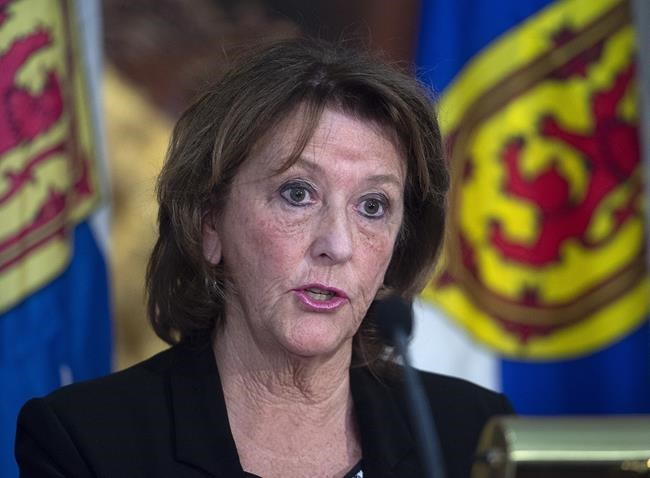HALIFAX — After a thin $55-million surplus tabled in February's budget, COVID-19 costs have driven Nova Scotia's finances deep into the red, resulting in a $853-million deficit.
Finance Minister Karen Casey said Wednesday in her budget update the deficit is the largest since the 1999-2000 fiscal year, when the province reported a $773-million hole. Casey blamed the COVID-19 pandemic for the $908-million reversal in the books.
"The COVID-19 pandemic has had a negative impact on our revenue here in Nova Scotia and our need to respond has significantly increased our expenses," Casey told reporters.
She said an additional $443 million in appropriations was required for nine government departments, with the majority of expenses related to protecting the public and boosting the economy during the pandemic. A large proportion of the increased spending — $374 million — went to the Health Department for such things as personal protective equipment and funding for essential workers.
That money is in addition to $228 million announced last month for more than 200 "shovel-ready'' infrastructure projects to help kick-start the economy. The previous funding for highway paving, bridge replacements, green energy projects, school repairs and museum upgrades was added to an already record $1-billion capital plan.
Casey said total revenue is projected to be $11.1 billion — down $532.1 million from the budget she presented in February — mainly due to decreased revenue from HST and corporate income tax. Overall expenses, she said, are projected to be $12.09 billion — up $470.3 million.
Casey said the province's net debt had increased to $16.9 billion from $15.7 billion, although lower interest rates helped reduce debt-servicing costs by $21.9 million.
"We are not going to be back to balanced budgets or surpluses for a while — that's not our goal," she said. "Our goal is to make sure that we provide the services and supports, we start to try to live within our means looking at the revenues and using those dollars wisely."
Meanwhile, the province is projecting an unemployment rate of 11 per cent — the highest figure since 1997. That's due to nominal economic growth that is 7.6 per cent lower than forecasted in the February budget. Finance officials, however, said they expect the economy to rebound next year.
Casey warned the latest numbers will change by her December update because they don't include the final figures for fiscal 2019-20, or Nova Scotia's share of the federal Safe Restart program, which is expected to be more than $250 million.
She did not include an estimate for the cost of a public inquiry into April's mass shooting — which killed 22 people — although Justice Department costs did increase by $3.2 million because of additional RCMP expenses related to the tragedy.
Progressive Conservative finance critic Murray Ryan said he was surprised the deficit wasn't bigger, adding Casey's updated figures only include the fiscal picture up until late May along with some revenues and expenses that reflect the situation as of July 8.
"We are going to be running deficits for a few years," said Ryan. "I think we just have to manage things properly and look to help the businesses and the industries that are in the most crises."
Claudia Chender, the NDPs finance critic, said the fiscal snapshot showed a lack of "planning and foresight" by the Liberal government. "The Liberals have failed to take into account the need for increased investment in education, child care, long-term care and housing," Chender said in a news release.
This report by The Canadian Press was first published July 29, 2020.
Keith Doucette, The Canadian Press



